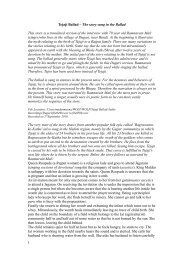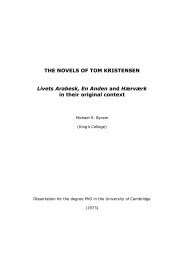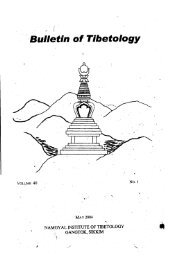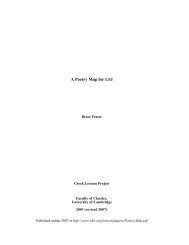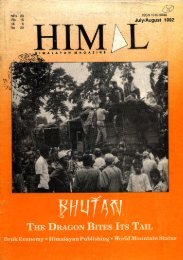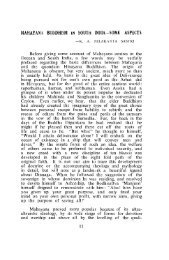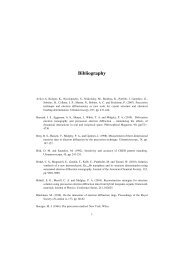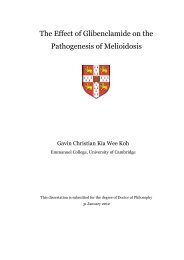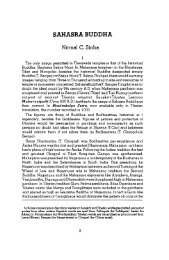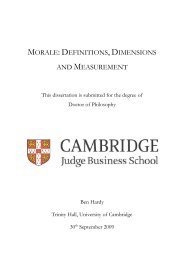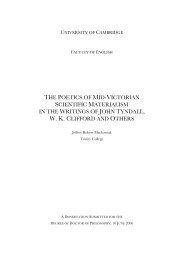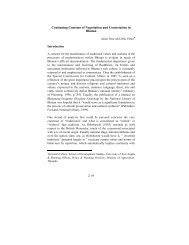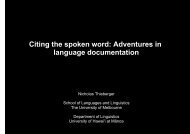The Crusades, the Genoese and the Latin East - DSpace at ...
The Crusades, the Genoese and the Latin East - DSpace at ...
The Crusades, the Genoese and the Latin East - DSpace at ...
Create successful ePaper yourself
Turn your PDF publications into a flip-book with our unique Google optimized e-Paper software.
<strong>Genoese</strong> names in <strong>the</strong> charters of Archbishop Joscius <strong>and</strong> Conrad of Montferr<strong>at</strong> include<br />
Ansaldo de Nigro, Ansaldo Guaraco, Arloto vicecomes <strong>and</strong> Roll<strong>and</strong>o Picio. <strong>The</strong>se people<br />
belonged to well known families in Genoa. However, <strong>the</strong>re reason to believe th<strong>at</strong> <strong>the</strong>y were not<br />
residents of Genoa: <strong>the</strong>ir names do not appear in any contemporary sources from Genoa before<br />
1190 or after 1192. How many of <strong>the</strong>se people lived in <strong>the</strong> <strong>L<strong>at</strong>in</strong> <strong>East</strong> before 1187 <strong>and</strong> how many<br />
of <strong>the</strong>m do not appear in <strong>the</strong> <strong>Genoese</strong> sources from <strong>the</strong> following years because<br />
<strong>the</strong>y perished in<br />
<strong>the</strong> wars? Some, like presbyter Turdano <strong>and</strong> magister Blanco, <strong>the</strong> represent<strong>at</strong>ives of <strong>the</strong> religious<br />
authorities in Tyre who received <strong>the</strong> concession from 'Archbishop Joscius, were probably<br />
inhabitants of <strong>the</strong> <strong>L<strong>at</strong>in</strong> <strong>East</strong> before, as <strong>the</strong> document refers to <strong>the</strong>m as simply lanuensibus<br />
canonicis <strong>and</strong> not as canons of a particular church in Genoa sb' It is not impossible th<strong>at</strong> those who<br />
had <strong>Genoese</strong> surnames but appear for <strong>the</strong> first time in <strong>the</strong> <strong>Genoese</strong><br />
text as witnesses to royal acts<br />
in Ultramare, were also inhabitants of <strong>the</strong> kingdom of Jerusalem before 1187.<br />
<strong>The</strong> analysis of <strong>the</strong> process of reestablishment of <strong>the</strong> <strong>Genoese</strong> community in <strong>the</strong> <strong>L<strong>at</strong>in</strong><br />
<strong>East</strong> thus far showed th<strong>at</strong> in many ways it was a complete new start for <strong>the</strong> commune. <strong>The</strong> influx<br />
of new blood to <strong>the</strong> kingdom of Jerusalem was encouraged by <strong>the</strong> local lords to remain in Tyre<br />
<strong>and</strong> <strong>Genoese</strong> individuals hastened to take advantage of <strong>the</strong>se opportunities. <strong>The</strong> powerful<br />
leadership of <strong>the</strong> commune was able to gain privileges th<strong>at</strong> spelled <strong>the</strong> fast recovery of <strong>the</strong><br />
commune <strong>and</strong> advanced <strong>the</strong> position of <strong>the</strong> <strong>Genoese</strong> among o<strong>the</strong>r trading communities th<strong>at</strong> were<br />
active in <strong>the</strong> <strong>L<strong>at</strong>in</strong> <strong>East</strong>.<br />
<strong>The</strong> <strong>Genoese</strong> financial <strong>and</strong> property reports from <strong>the</strong> <strong>L<strong>at</strong>in</strong> <strong>East</strong><br />
An additional source of inform<strong>at</strong>ion on <strong>the</strong> <strong>Genoese</strong> settlers is found in <strong>the</strong> property <strong>and</strong> financial<br />
reports from <strong>the</strong> middle of <strong>the</strong> thirteenth century. <strong>The</strong>se are interesting documents th<strong>at</strong> offer some<br />
ideas about life in <strong>the</strong> <strong>Genoese</strong> quarters in Acre <strong>and</strong> Tyre. <strong>The</strong>re are many ways to analyse <strong>the</strong>se<br />
documents, as mentioned above, scholarship often concentr<strong>at</strong>ed on <strong>the</strong> geographical <strong>and</strong> urban<br />
questions with an <strong>at</strong>tempt to reconstruct maps of <strong>the</strong>se urban units. However, <strong>the</strong> following<br />
paragraphs will focus on several aspects concerning <strong>the</strong> people who lived in <strong>the</strong>se <strong>Genoese</strong><br />
neighbourhoods. This means th<strong>at</strong> <strong>the</strong> document written about Acre is of more significance to <strong>the</strong><br />
current analysis than <strong>the</strong> one written on Tyre, because it provides a list of house holders in <strong>the</strong><br />
burgensia <strong>and</strong> in <strong>the</strong> ruga comunis Ianuae. In contrast to Acre <strong>the</strong> report on Tyre only mentions<br />
individuals <strong>and</strong> <strong>the</strong>ir property as an indic<strong>at</strong>ion of <strong>the</strong> loc<strong>at</strong>ion of communal property.<br />
<strong>The</strong> report on Acre has its shortfalls too. Unlike Prawer's assumption th<strong>at</strong> <strong>the</strong> <strong>Genoese</strong><br />
list is inclusive of all <strong>the</strong> houses owned by members of <strong>the</strong> commune, it seems th<strong>at</strong> <strong>the</strong> list is only<br />
partial <strong>and</strong> excludes much of <strong>the</strong> priv<strong>at</strong>e property. For example, <strong>the</strong> property of <strong>the</strong> church of<br />
567<br />
CDG, vol. 2, pp. 373-374.<br />
166



